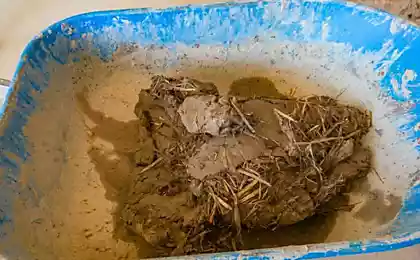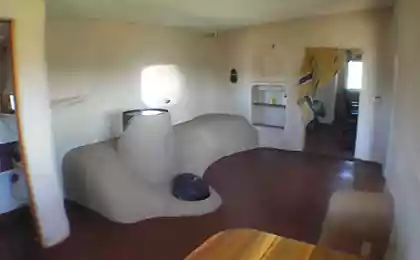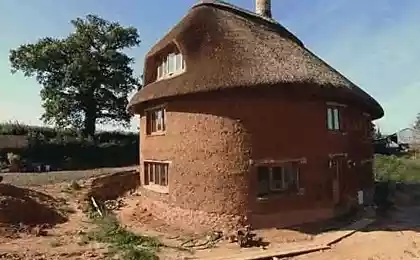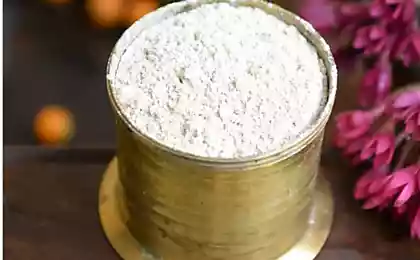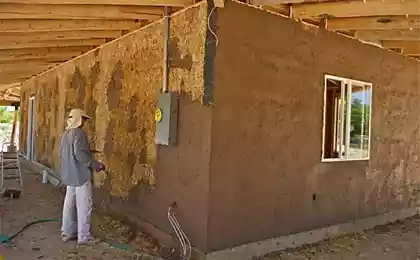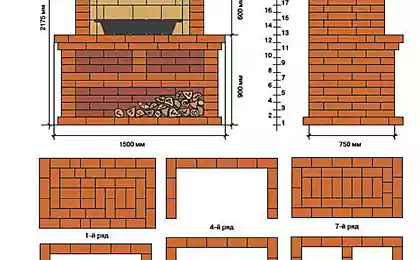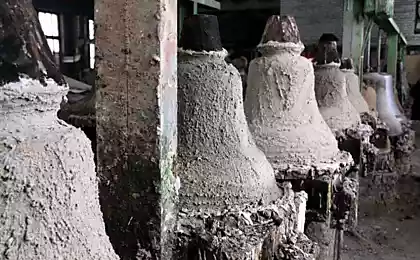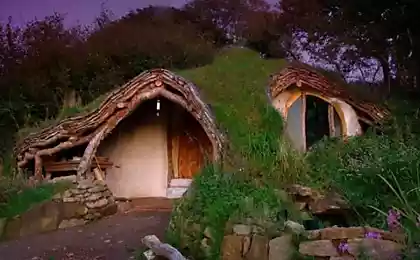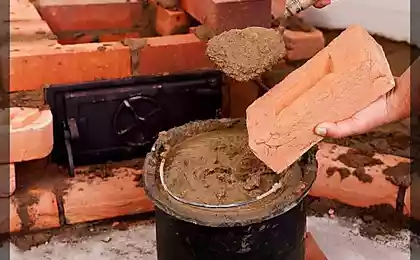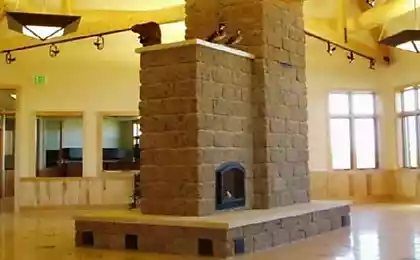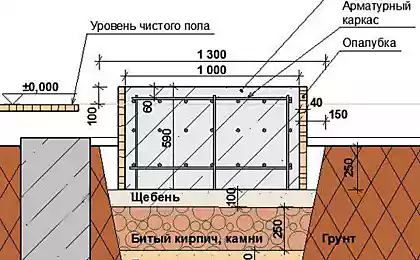157
The clay floor in the ecohome – a healthy technology
Health, environmental friendliness, water resistance, huge mechanical strength, cheapness and simple restoration, manufacturing with your own hands are the main advantages of clay flooring.
On the example of American eco-builders, consider how clay floors are created, which some experts give a lifetime guarantee! Due to the deep penetrating impregnation of flaxseed oil, clay is transformed into a well-known peasant pot from which was eaten for thousands of years before the advent of porcelain.
And the layer of wax gives the durability of the front surface of the floor and the aesthetics of the natural covering material! Today, the samana floor is gaining momentum in popularity in America and Europe. Many families who have decided to build natural houses want to get rid of the chemical poisonous components of modern flooring poisonous fumes our families for many years.
Given the high price of modern industrial floors, savings become another reason for choosing a natural clay and oil floor. In foreign and domestic blogs a lot of information. The described experience is an experiment of our American colleague and is not the only way. The entire recipe must be selected independently experimentally.
Clay flooring is the manufacturing process from start to finish.
1. Raising the soil layer at the site of the future floor.
2. A layer of polypropylene is laid to protect against sucking soil moisture into the floor.
3. thermal insulation bearing layer of insulation.
4. Engineering communications pipes, if necessary.
5.Water barrier
6. Mixture of clay/small crushed stone or sand/shed of straw - as the main rough layer 7 cm.
7. In this layer, install the pipes of the warm floor where planned.
8. The final layer of clay / sand is smoothed to a completely flat surface.
9. Cover 4 layers with impregnation of clay / fine sand / 20% flour to increase wear resistance. You can use red clay to give the floor color. Excess impregnation remove the cloth. Drying.
10. Cover with warm but not hot flaxseed oil in 4-7 layers at will. The first layer is 100% oil, the second is -20-45% mineral solvent, the third is 50-60% solvent. Consumption of 19 liters of flaxseed oil per 30 square meters with 4 layers. the first two layers of the floor is actively drinking. Then the oil begins to dry harder and you need to open the windows. Use organic raw oil without chemical additives is desirable. If the proportions are broken, the floor may remain sticky. The oil can be removed with turpentine or, in extreme cases, a demixide solution. Always test the proportions experimentally before applying as the materials may differ in their properties.
11. After drying, the floor is covered with beeswax.
Source: www.ecology.md
On the example of American eco-builders, consider how clay floors are created, which some experts give a lifetime guarantee! Due to the deep penetrating impregnation of flaxseed oil, clay is transformed into a well-known peasant pot from which was eaten for thousands of years before the advent of porcelain.
And the layer of wax gives the durability of the front surface of the floor and the aesthetics of the natural covering material! Today, the samana floor is gaining momentum in popularity in America and Europe. Many families who have decided to build natural houses want to get rid of the chemical poisonous components of modern flooring poisonous fumes our families for many years.
Given the high price of modern industrial floors, savings become another reason for choosing a natural clay and oil floor. In foreign and domestic blogs a lot of information. The described experience is an experiment of our American colleague and is not the only way. The entire recipe must be selected independently experimentally.
Clay flooring is the manufacturing process from start to finish.
1. Raising the soil layer at the site of the future floor.
2. A layer of polypropylene is laid to protect against sucking soil moisture into the floor.
3. thermal insulation bearing layer of insulation.
4. Engineering communications pipes, if necessary.
5.Water barrier
6. Mixture of clay/small crushed stone or sand/shed of straw - as the main rough layer 7 cm.
7. In this layer, install the pipes of the warm floor where planned.
8. The final layer of clay / sand is smoothed to a completely flat surface.
9. Cover 4 layers with impregnation of clay / fine sand / 20% flour to increase wear resistance. You can use red clay to give the floor color. Excess impregnation remove the cloth. Drying.
10. Cover with warm but not hot flaxseed oil in 4-7 layers at will. The first layer is 100% oil, the second is -20-45% mineral solvent, the third is 50-60% solvent. Consumption of 19 liters of flaxseed oil per 30 square meters with 4 layers. the first two layers of the floor is actively drinking. Then the oil begins to dry harder and you need to open the windows. Use organic raw oil without chemical additives is desirable. If the proportions are broken, the floor may remain sticky. The oil can be removed with turpentine or, in extreme cases, a demixide solution. Always test the proportions experimentally before applying as the materials may differ in their properties.
11. After drying, the floor is covered with beeswax.
Source: www.ecology.md


